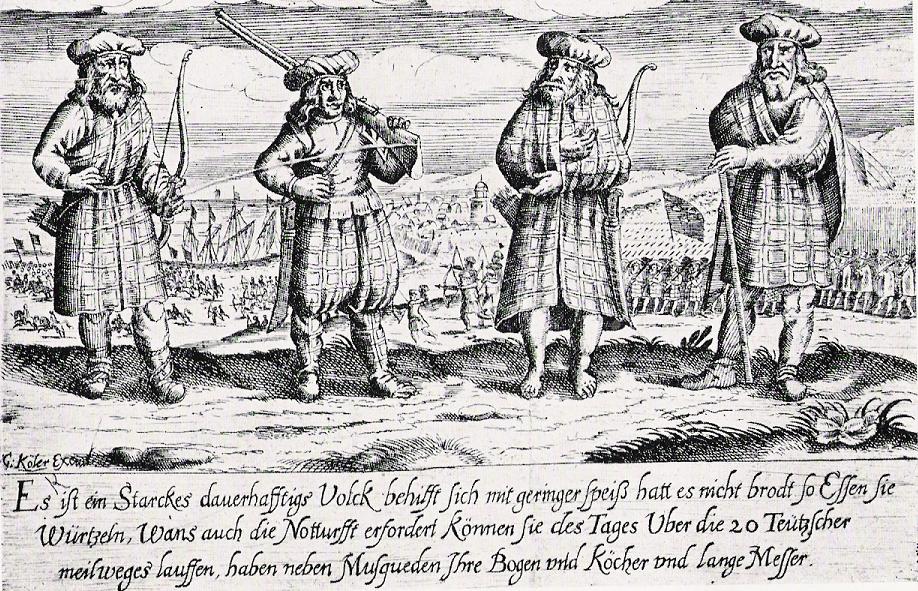
Join Amazon Prime - Watch Thousands of Movies & TV Shows Anytime - Start Free Trial Now
Four 'Irish' mercenaries in Stettin during the Thirty Years War, 1632.
|
__________________________________________________________________________________________________________________ Kurtze Beſchreibung / deß auß Irrland / Königl. Ma jeſtat in Schweden ankommenten Volcks/von dero Lands Art / Natur / Waffen vnnd Eygenschafft. __________________________________________________________________________________________________________________ In ſolchem Habit Gehen die 800 In Stettin angekommen Irrlander oder Irren.  |
|
Es iſt ein Starckes dauerhafftigs Volck behilft ſich mit geringer ſpeiß hatt es nicht brodt ſo Eſſen ſie Würtzeln Wans auch die Notturfft erfordert können ſie des Tages Vber die 20 Teützſcher meilweges lauffen, haben neben Muſqueden Ihre Bogen vnd Köcher vnd lange Meſſer. |
Possibly 'Irish' from the western isles of Scotland, see The Scots by George Gush.
Held by the British Library
Reference: Travels to terra incognita : the Scottish Highlands and Hebrides in early modern travellers' accounts c. 1600 to 1800 by Martin Rackwitz
